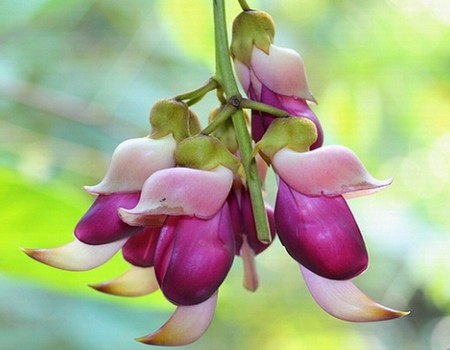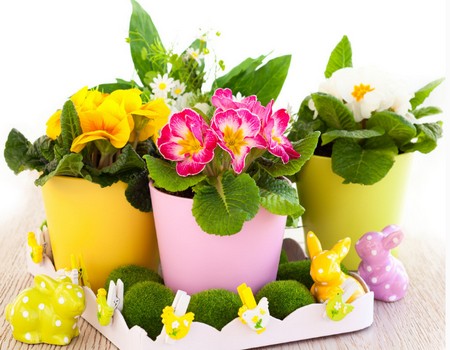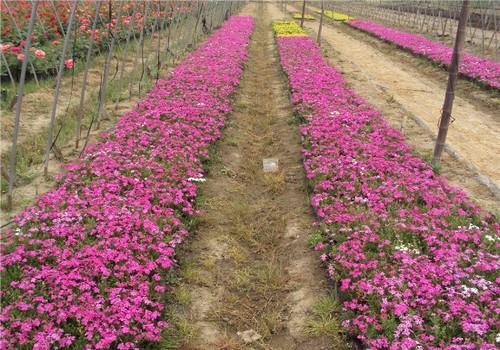Planting technique of Sparrow Flower
On the weekend since the beginning of spring, have seen the golden rape blossoms, photographed the pink cherry blossoms, plum blossoms and so on, do you think it is not strange to see more? If you want to be special, you might as well enjoy the sparrow flowers, which hang in the vines and are loved by everyone, which may be the spectacular "good spring" that can only be seen in Guangdong.

Also known as sparrow flower, flower oil sesame vine, is the national secondary protection plant. The flower spike is a cluster-shaped cluster, which grows directly on the vine and gets its name because it looks like a sparrow. The country of origin is in the subtropics, Guangdong, Jiangxi, Fujian, Guangxi, Guizhou, Sichuan and other provinces and regions, especially in Guangdong Province. Because the grass sparrow flowers are evergreen all the year round, whenever there is a continuous spring rain before and after Ching Ming Festival, whether in the countryside or in the courtyard, the grass sparrow flowers born according to the vine are full of flowers and hang in a string of 30 birds each, which is like a sparrow flying, which is of great ornamental value.
A few days ago, many strange flowers in many parks in Shenzhen attracted the attention of many citizens. These flowers or purple, or yellow, or white, flowers drooping, petals open, like many birds in a neat line spread their wings, dancing posture, so that visitors do not like, have taken pictures. It turns out that these flowers are sparrow flowers, which bloom between spring. Friends who want to grow sparrow flowers can continue to learn more about them.
[when does the Finch blossom]
The florescence of grass sparrow is relatively short, the time is from March to April, and the flowering period is two weeks. When the blooming season is in full bloom, it is like there are countless pointing birds staying here, there are whispers, there are century-old homing, there are wings pecking, and so on, everyone wants to show their most beautiful side, let the finches bloom all over the country, and become a sea of finches.
The sparrow flower can be propagated by cutting and striping when it is cultivated. Cuttings are carried out in spring, selecting sturdy branches as cuttings and rooting in about a month. Cuttings outdoors in summer need to be sheltered from the sun. When planting with pressing strips, the vines that fall on the ground are mainly used to cut the lower end of the internodes and press them into the soil to keep the soil moist and cut off new branches after rooting, which can be used for ground planting or vertical greening. Pond mud can be mixed with slow-acting fertilizers such as peat soil or garbage soil to properly control plant growth. After entering the autumn, the over-dense vines and aging branches need to be trimmed once, so that it can increase the light transmittance and can better promote the growth of sparrow flowers.
[breeding]
Seed selection: first of all, the seeds should be selected before sowing. Whether the seeds are good or not is directly related to the success of sowing.
1. It is best to choose the seeds harvested in the same year. The longer the seed is preserved, the lower the germination rate is.
2. Choose full seeds without defective or deformed seeds.
3. Select the seeds free from diseases and insect pests.
Planting preparation:
1. Disinfection
Disinfection includes two concepts, one refers to the disinfection of seeds, and the other refers to the disinfection of sowing substrates. Families usually soak the seeds in hot water for about 60 ℃ for a quarter of an hour, and then use warm hot water to accelerate germination for 12 to 24 hours. The best way to disinfect the substrate used for sowing is to stir-fry it in a pan so that any diseases and insects can be scalded to death.
2. Sprouting
Soak the seeds in warm hot water (the temperature is about the same as facial wash) for 12 to 24 hours until the seeds absorb water and expand. For common seeds that germinate easily, this work does not have to be done.
3. Sowing seeds
For small seeds that are difficult to pick up with hands or other tools, wet one end of the toothpick with water, stick the seeds one by one on the surface of the matrix, cover the substrate 1 cm thick, and then put the seeding flowerpot into the water. the depth of the water is 1 foot 2 feet 2 tap 3 of the height of the flowerpot, allowing the water to soak up slowly (this method is called "pot immersion").
For larger seeds that can be picked up by hand or other tools, put the seeds directly into the substrate and order them at a distance of 3 × 5 cm. After sowing, the substrate was covered, and the thickness of the cover was 2-3 times that of the seed. After sowing, you can wet the sowing matrix with sprayers and fine-hole showers. Later, when the basin soil is slightly dry, you should still pay attention to the watering strength so as not to wash the seeds up.
4. Cuttage
It is often used for softwood cutting in late spring and early autumn, or old wood cuttings with branches from last year in early spring.
Cutting substrate: is used for cutting nutrient soil or river sand, peat soil and other materials. Family cutting is limited to the conditions, it is difficult to get an ideal cutting substrate, using medium and coarse river sand is also fine, but it should be washed with clean water several times before use. Do not use sea sand and river sand in saline-alkali areas, they are not suitable for the growth of flowers and plants.
Cutting branches: when the tender wood cuttings are carried out, the sturdy branches of the current year are selected as cuttings when the plants are growing vigorously from the end of spring to early autumn. After cutting off the branches, select the sturdy parts and cut them into segments 5-15 cm long, each with more than 3 leaf nodes. When cutting cuttings, it should be noted that the upper cut is cut flat at about 1 cm above the uppermost leaf node, and the lower cut is about 0.5 cm below the lowest leaf node, and the upper and lower cut should be flat (knife should be sharp). When hardwood cuttings are carried out, after the temperature rises in early spring, last year's robust branches are selected as cuttings. Each cuttage usually retains 3-4 nodes, and the cutting method is the same as that of softwood cuttings.
The sparrow blossoms are particularly lively and noisy, and hundreds of thousands of flowers are so spectacular and rich from afar. Plant it at home to liven up the atmosphere at home, like finding a lot of birds to accompany you in spring, calling friends and full of vitality. Friends who want to add more vitality to their home might as well consider planting a sparrow flower, so that even in the quiet and peaceful spring, the deserted home can radiate the infinite vitality of life.
Time: 2019-05-25 Click:
- Prev

Planting techniques of potted primroses
Primroses are the symbol of spring. When primroses bloom, it indicates that spring is coming. The leaves of primroses grow in clusters, the leaves are oval, the flowers are colorful, and the flowers are umbrella-shaped. Primroses are widely planted and have become an important garden flower. Primrose is a kind of flower plant that blooms in early spring.
- Next

The planting method of Fulukao in clusters
It has a long green period and a long flowering period, especially in early spring when it is in full bloom, which is like a colorful carpet. The blooming period in early spring is like a colorful carpet, which is very gorgeous and festive. It is suitable for planting felt flower beds in landscaping.
Related
- Fuxing push coffee new agricultural production and marketing class: lack of small-scale processing plants
- Jujube rice field leisure farm deep ploughing Yilan for five years to create a space for organic food and play
- Nongyu Farm-A trial of organic papaya for brave women with advanced technology
- Four points for attention in the prevention and control of diseases and insect pests of edible fungi
- How to add nutrient solution to Edible Fungi
- Is there any good way to control edible fungus mites?
- Open Inoculation Technology of Edible Fungi
- Is there any clever way to use fertilizer for edible fungus in winter?
- What agents are used to kill the pathogens of edible fungi in the mushroom shed?
- Rapid drying of Edible Fungi

